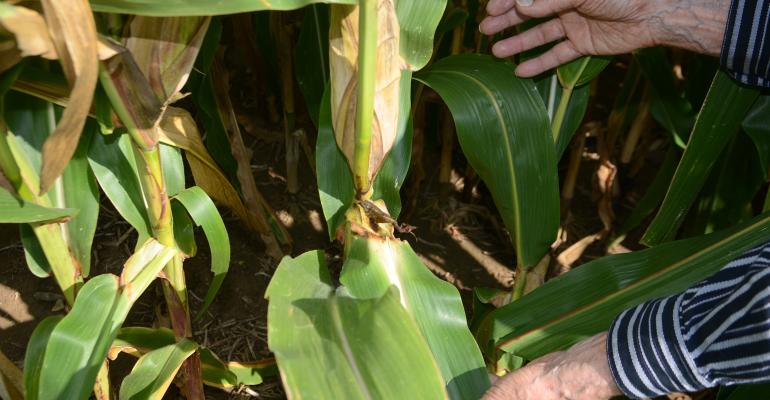Corn fungicides: Looking back, looking ahead

Corn Pest Beat: See why there are differences in opinion in how to develop fungicide strategies for corn.
Nov 29, 2022
We sprayed fungicide and kept disease in check in central Indiana. I saw small lesions at black layer and pulled samples. Purdue confirmed tar spot, gray leaf spot, northern corn leaf blight and southern rust. Should I spray differently?
The Indiana certified crop adviser panel answering this question includes Danny Greene, agronomist with Greene Crop Consulting Inc., Franklin; Marty Park, sales agronomist with Gutwein Seed Services, Rensselaer; Jesse Uebelhor, agronomist with Superior Ag, Jasper; and Dan Quinn, Purdue Extension corn specialist.
Greene: Fungicide applications have traditionally been most cost effective at early reproductive stages with a single application. Keeping upper leaves clean is key to converting sunlight to grain. Tar spot and southern rust can arrive after fungicides lose effectiveness and quickly impact corn.
Late weather events may justify a second treatment. Multiple timings are being evaluated. Fields with high yield potential may return the most benefit from multiple applications.
Park: Grain fill starts at pollination and ends at black layer. Even the longest-lasting foliar fungicides will not provide season-long control from a single application. Basically, they provide a two- to three-week window of protection. Seeing diseases show up at black layer is a warning of inoculum for the future. I would not change your program.
Uebelhor: Disease at black layer or later should have no impact on yield. Use a fungicide to prevent disease infection before it’s present.
Many growers have in-furrow row starters. Liquid fertilizer-ready products mixed with fertilizer, like Tepera Plus HD, have given growers some disease protection to allow for later applications closer to R2.
Other growers place fertilizer in a zone three-quarters to 2 inches away from the seed and use products like Xyway LFR. We’ve seen excellent results using these programs to prevent onset of disease, allowing growers to spray fungicides later in reproductive stages.
If you’re not set up for them, we’ve used postemergence herbicide application near V5 to add a strobilurin fungicide like Quadris, Headline or Stratego YLD to increase plant health and prevent diseases.
I really believe you must have two applications of fungicide in corn, and in some severe disease areas, I’ve even seen a third fungicide application pay, depending on environmental conditions. At one time, most chemical companies wanted you to spray fungicide prior to VT/full tassel. In the perfect world, I would use a fungicide with row starter, followed by V5 and then finish with R2 fungicide. There are many options at R2. Make sure you’re getting a quality product because you still have roughly 50 days before black layer.
Quinn: Spraying fungicide at R1/R2 provides the most consistent control of disease and yield responses. Only in severe cases, where a disease like tar spot comes in early, will multiple fungicide applications or fungicide timing changes be warranted. Seeing a few lesions at black layer tells me the disease was held long enough to not impact yield.
Due to dry conditions in 2022, many foliar diseases didn’t come in until late. Spraying fungicides past R3 typically doesn’t provide yield or economic benefit. I would not change your current fungicide management.
However, it’s important to continue scouting. Understand first, what diseases are present, and second, when they are present. That can change each year and affect how you optimize fungicide use.

